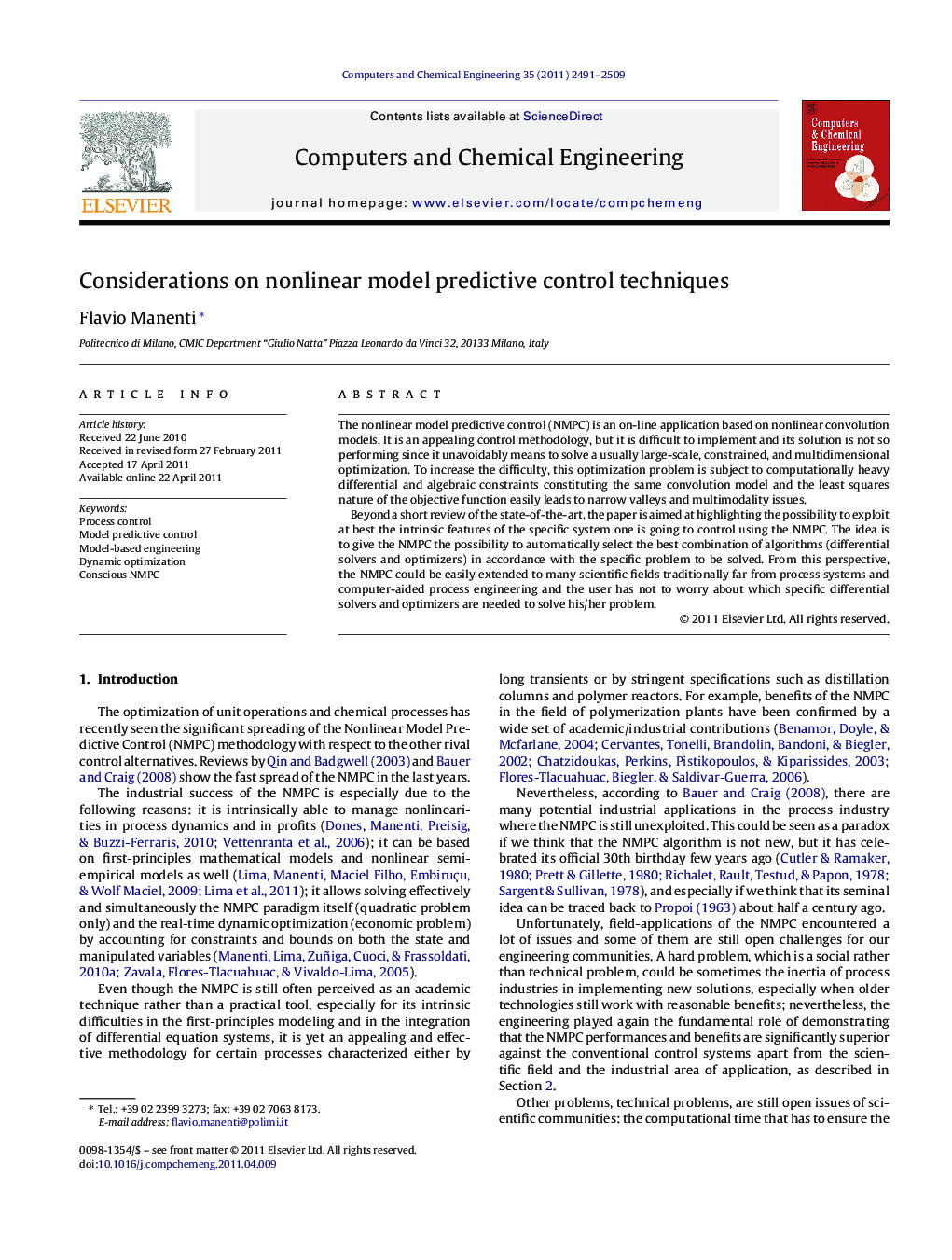| Article ID | Journal | Published Year | Pages | File Type |
|---|---|---|---|---|
| 173094 | Computers & Chemical Engineering | 2011 | 19 Pages |
The nonlinear model predictive control (NMPC) is an on-line application based on nonlinear convolution models. It is an appealing control methodology, but it is difficult to implement and its solution is not so performing since it unavoidably means to solve a usually large-scale, constrained, and multidimensional optimization. To increase the difficulty, this optimization problem is subject to computationally heavy differential and algebraic constraints constituting the same convolution model and the least squares nature of the objective function easily leads to narrow valleys and multimodality issues.Beyond a short review of the state-of-the-art, the paper is aimed at highlighting the possibility to exploit at best the intrinsic features of the specific system one is going to control using the NMPC. The idea is to give the NMPC the possibility to automatically select the best combination of algorithms (differential solvers and optimizers) in accordance with the specific problem to be solved. From this perspective, the NMPC could be easily extended to many scientific fields traditionally far from process systems and computer-aided process engineering and the user has not to worry about which specific differential solvers and optimizers are needed to solve his/her problem.
► NMPC can automatically select the best set of algorithms (conscious NMPC). ► Conscious NMPC improves numerical stability, accuracy, and effectiveness. ► Conscious NMPC self-regulates efficiency and robustness according to the problem. ► Detailed model for the PET process is given to test the conscious NMPC technique.
